Water-based (ceramic) clay as a sculpture material has many benefits: it’s relatively inexpensive (about $15 – $25 for a 25 pound bag), it is adaptable for small and large scale works, it accommodates many options for finishing, it’s lusciously tactile and yummy feeling to work with, and, once fired, it’s pretty much going to be around until the end of time (think about the Venus of Dolní Věstonice – still rocking her goddess vibes some 29,000 years later). It’s also great to have the option of molding and casting the original clay sculpture in another material such as bronze, plaster or resin -or- firing the original sculpture and having that as the finished piece.
That said, there are also specific challenges that come with any material. Today, I’ll share some tidbits about the process problem solving involved in our most recent collaboration: “Cowgirl”, who has her own goddess goodness going on.

With our “Invocation: Dance Me Into the Light”, we used an intentionally placed Phoenix as an integral part of the concept and to emphasize the spiralling action of the sculpture, and **Bonus!** it also supports the figure standing predominantly on one foot.
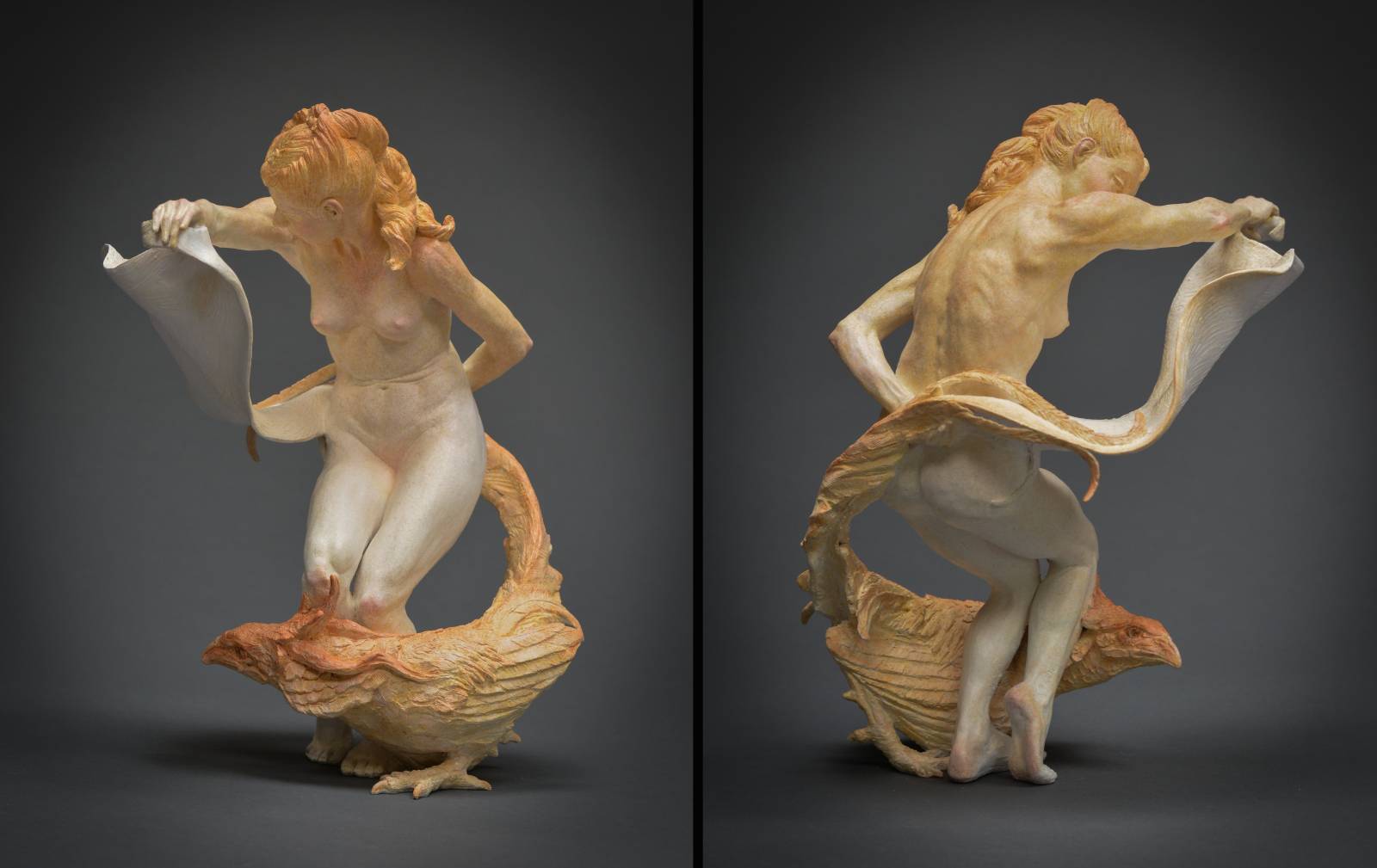
An option that has worked well for us is this: Colin designed and constructed a three-pronged adaptation to a basic armature stand which helps support the weight of the clay until further along in the process when it is firm enough to stand on its own. (The adjustable armature stand itself is from SculptureDepot.net – great people and wonderful selection of tools and materials in Loveland, Colorado.)
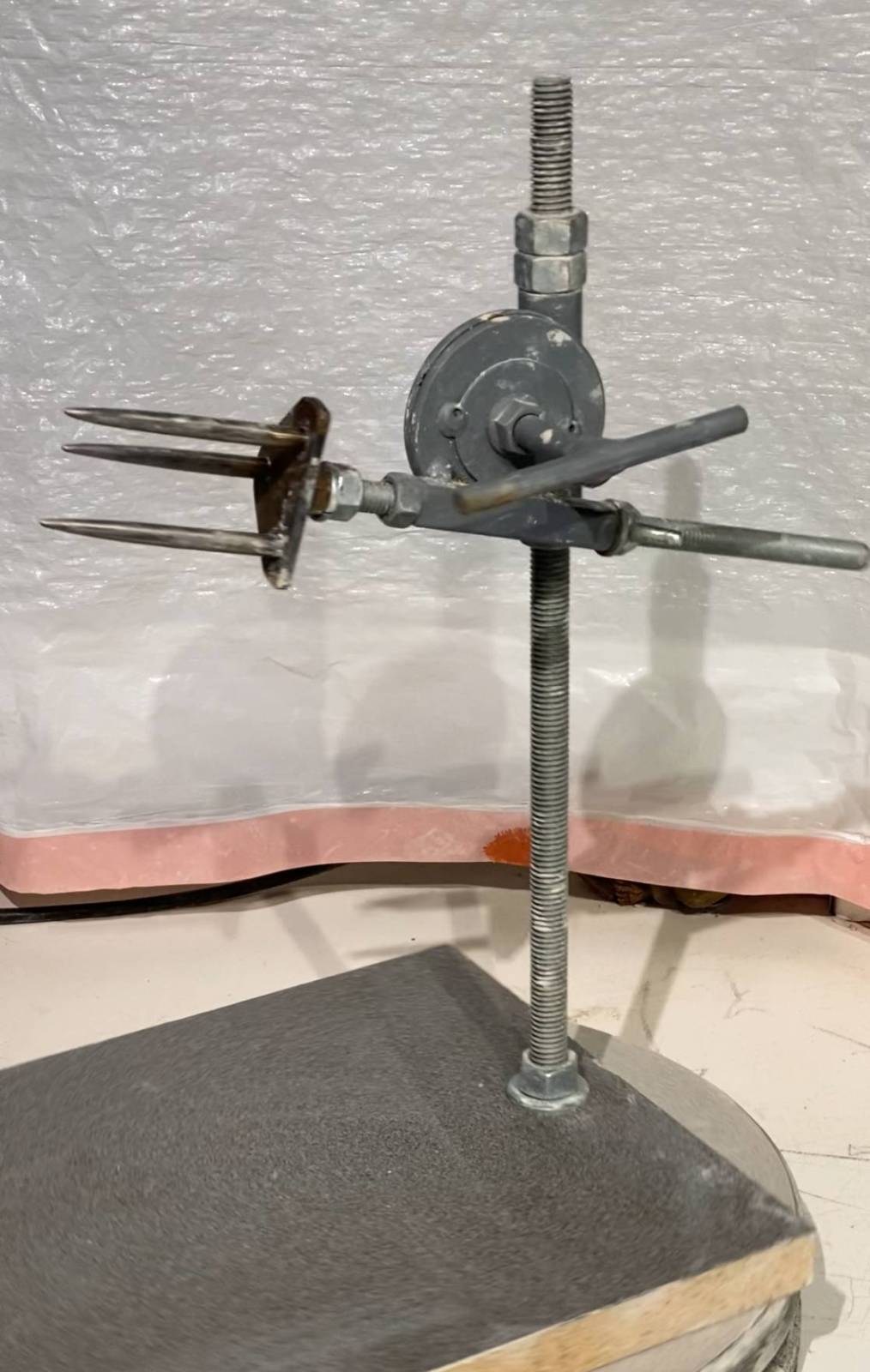
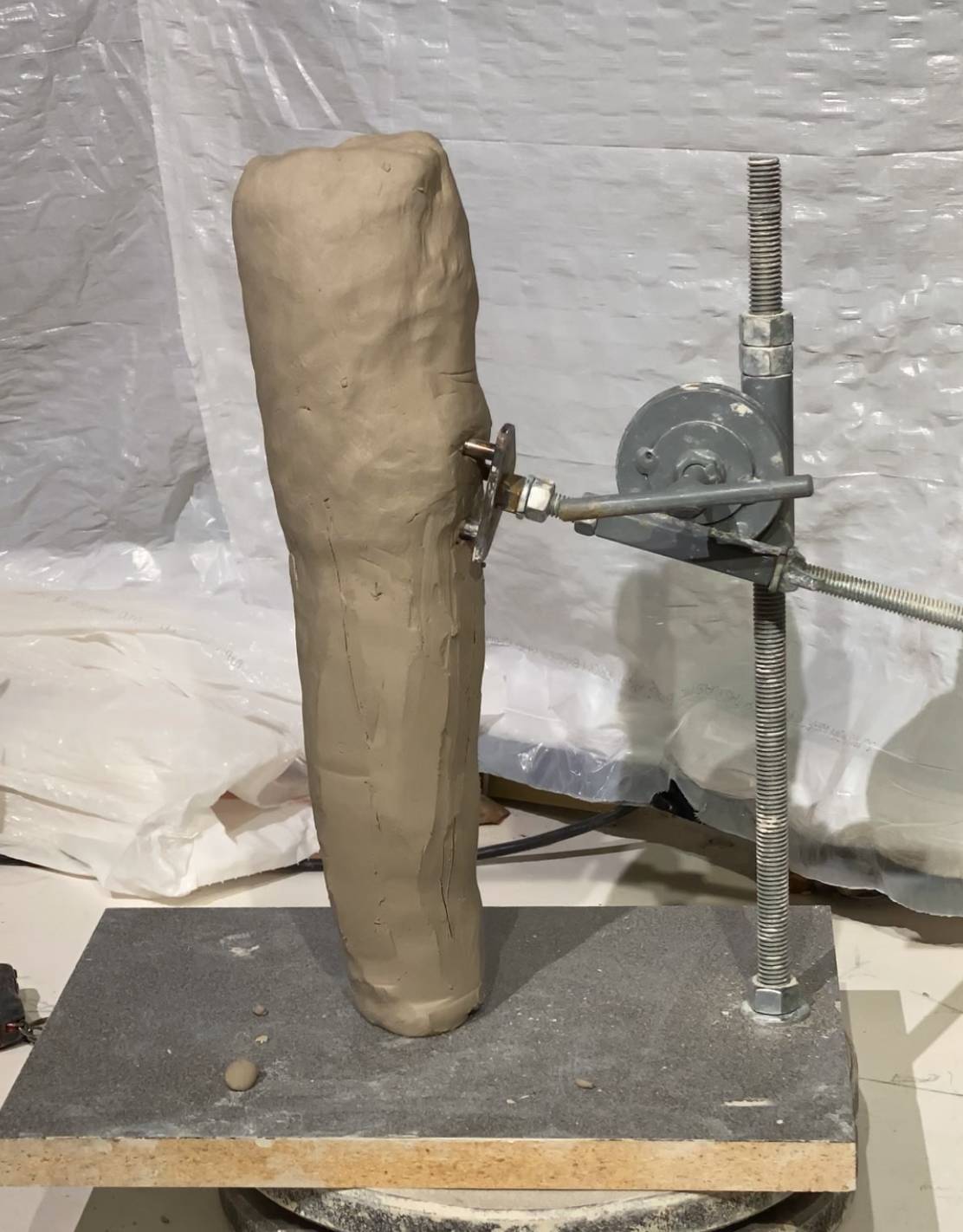
At this point she has been hollowed out and is leather hard (the clay is dried enough to be strong and not slumpy, but is still workable enough to shape, carve, etc.) Just after this point in the sculpting, I removed her from the spikes, filled in the holes and refined that side of her body that was inaccessible due to the armature. She was stable enough to stand on her own during the remaining parts of the sculpting. Once the sculpting was complete, I dried her laying down. Read on…

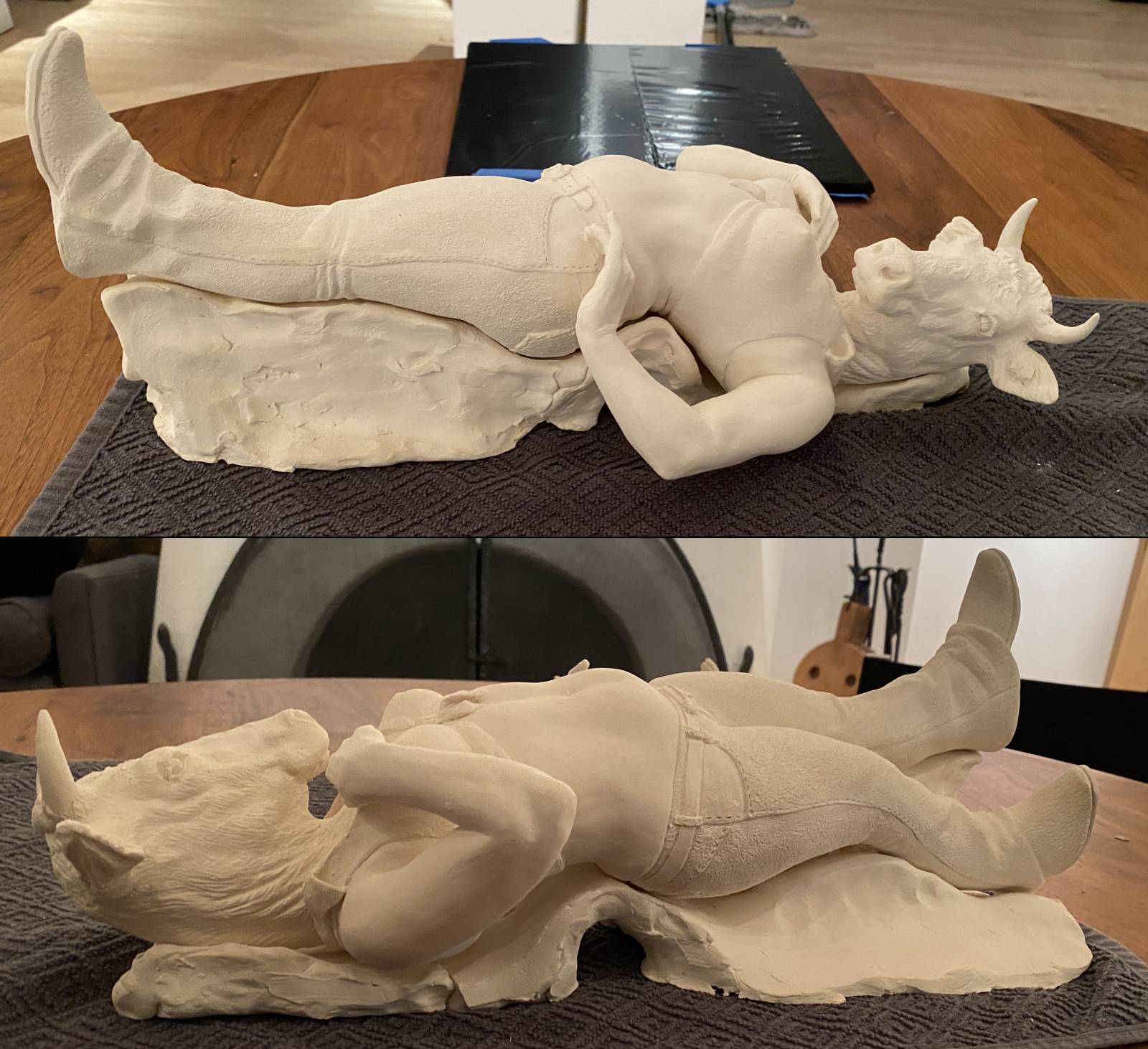
To be certain we have a perfectly flat surface, we use a marble tile covered with a double layer of thick plastic. Contractor bags work well. The double layer is important as this method creates such a precise fit that removing the sculpture from a single layer can prove problematic (ask me how I happen to know this… ) Two perfectly milled surfaces can be difficult to pull apart…scary.
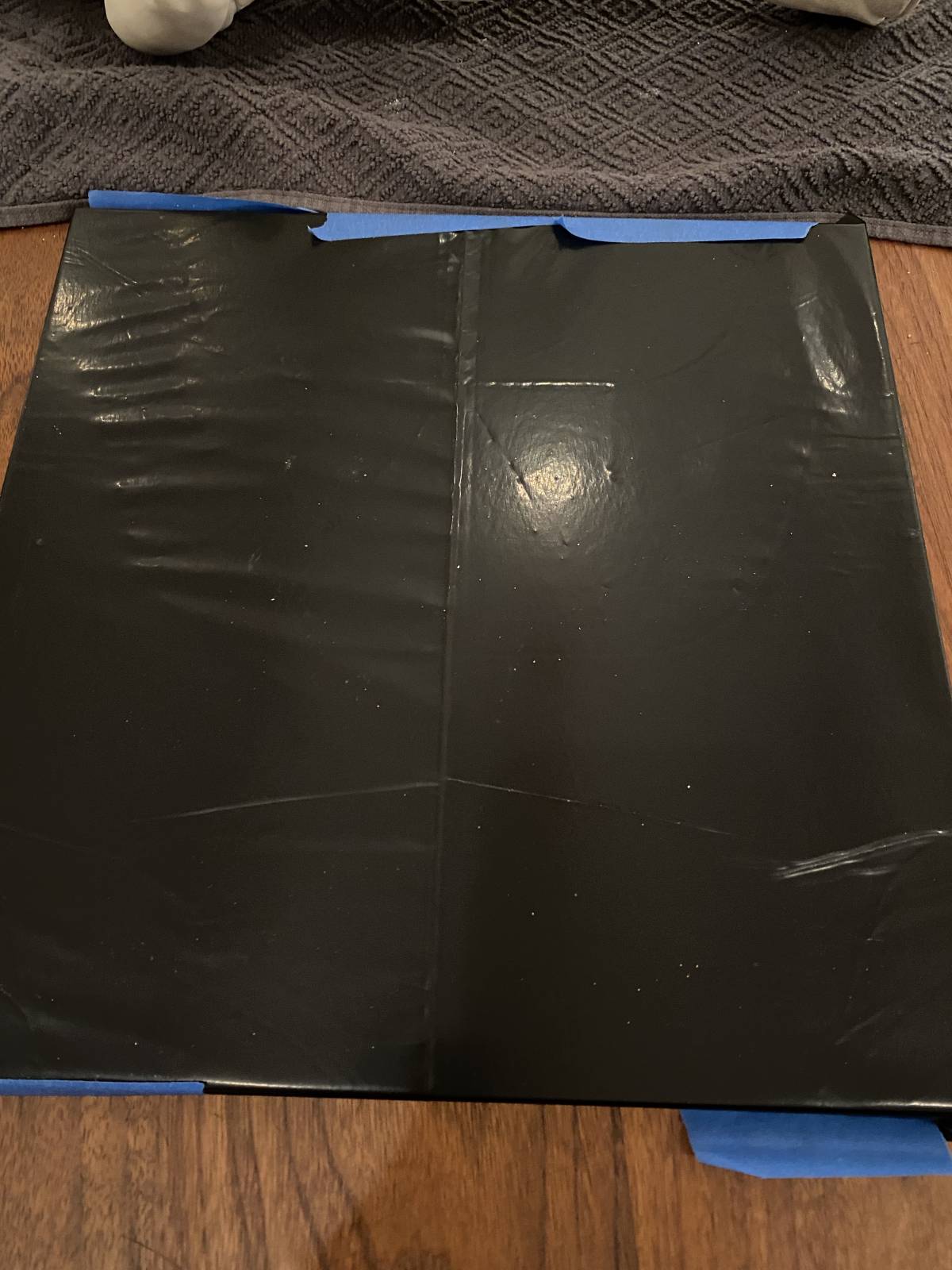
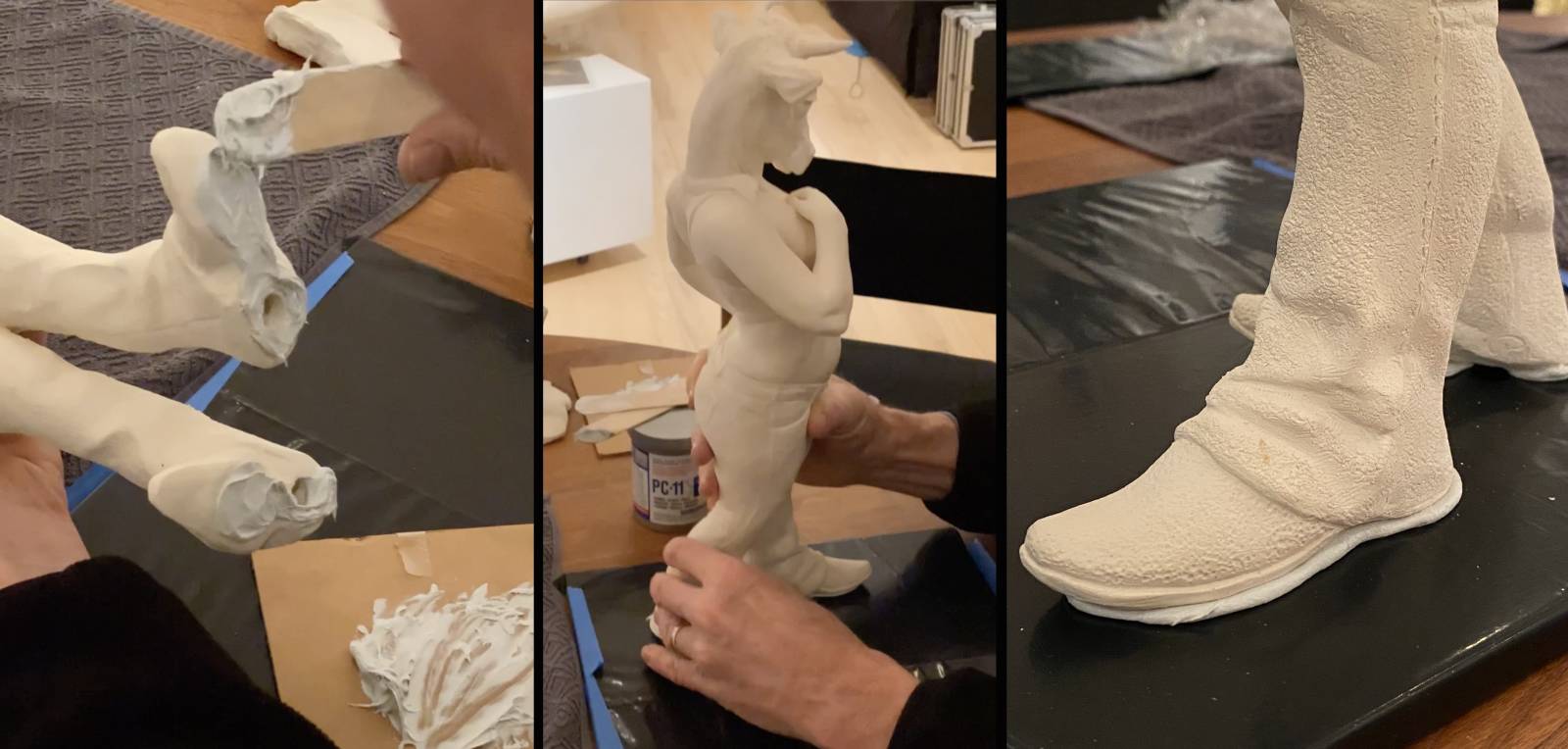
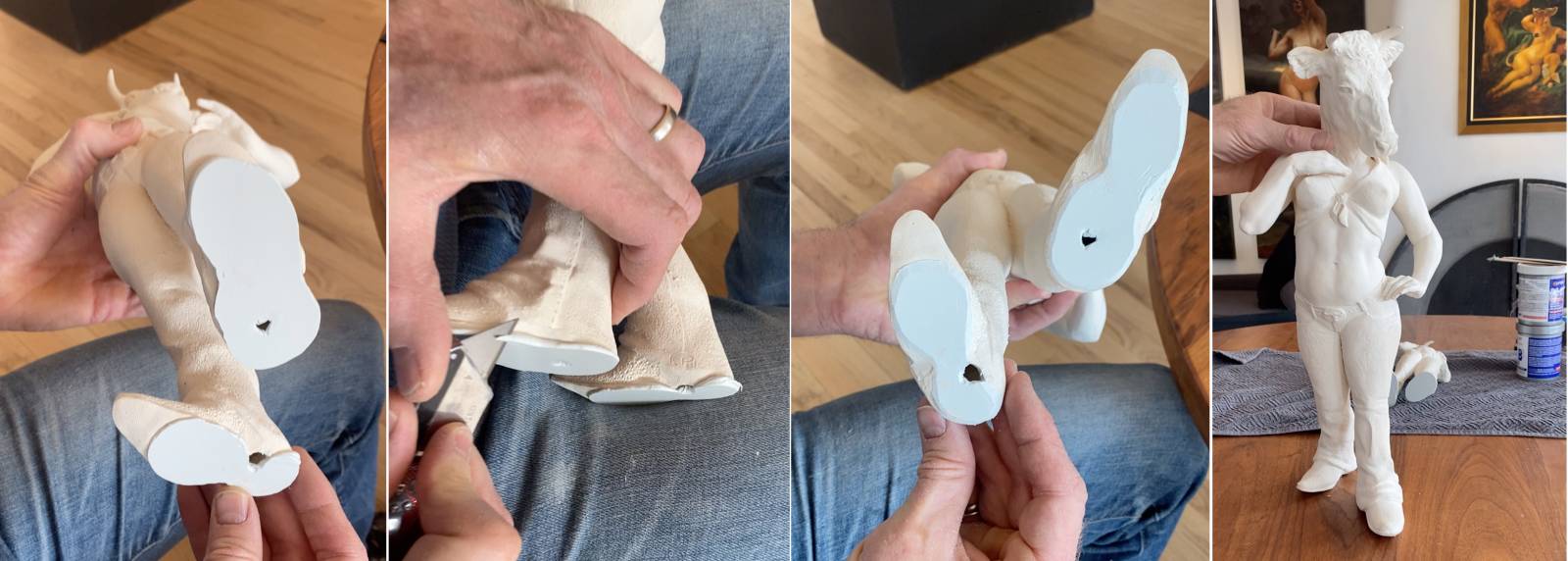
1. Epoxy pad upon removing from plastic 2. Carving the edges 3. Edges before sanding 4. Look Ma! No wiggle!
If you work with ceramics, you will be dealing with cracks at some point or another. It’s just part of the process. The different parts of the clay may shrink at slightly different rates in the drying or firing and this causes tiny cracks to develop. They’re generally not structural. Some people choose to leave them as part of the process being visible. We prefer to repair them as we find them visually distracting.
I had some epoxy left over, so thought I’d tend to the cracks. The bluish tint of the PC-11 epoxy isn’t a match for the warm fired clay tones. We tint the epoxy using powdered pigments. We try to make the repair as invisible as possible as this gives us the most flexibility in choosing how we want to finish a piece. If the repair matches well, we can do very light tinting of the surface or full coverage.
When seen side by side with the clay, the blue hue of the epoxy is quite evident. Unbleached Titanium is a pretty good match for the clay, but when mixed with the blue-toned epoxy, it gets a greenish cast. We added a bit of Italian Orange Ochre to warm it up and came up with a reasonable match. Using a toothpick, we pack the cracks with the epoxy, then texture the surface to match the surrounding areas. Once this cures, we’ll be ready to apply our final finish – in this case, we’ll be using acrylic.



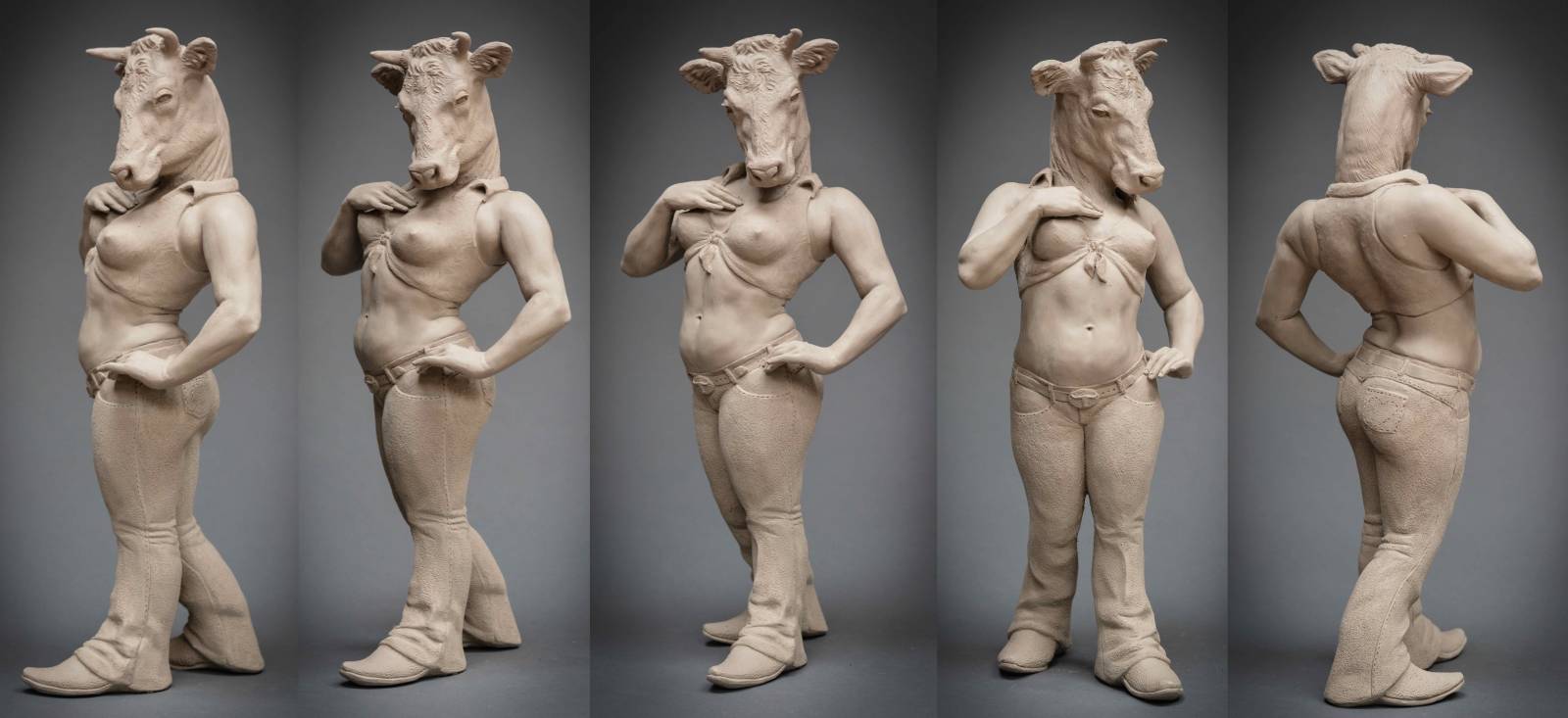
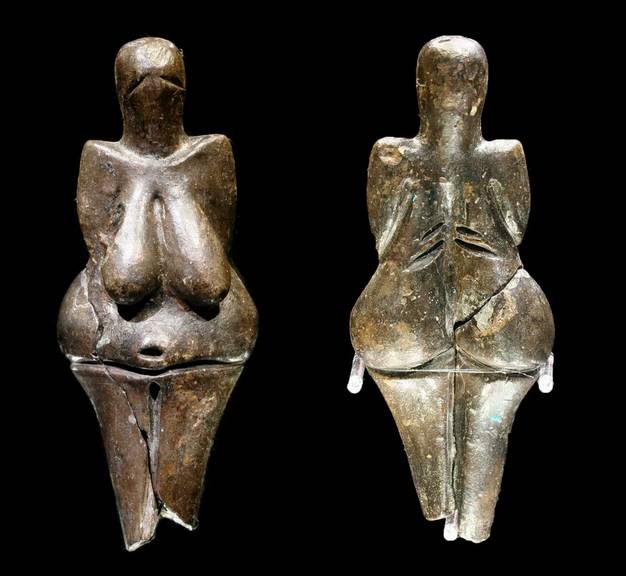

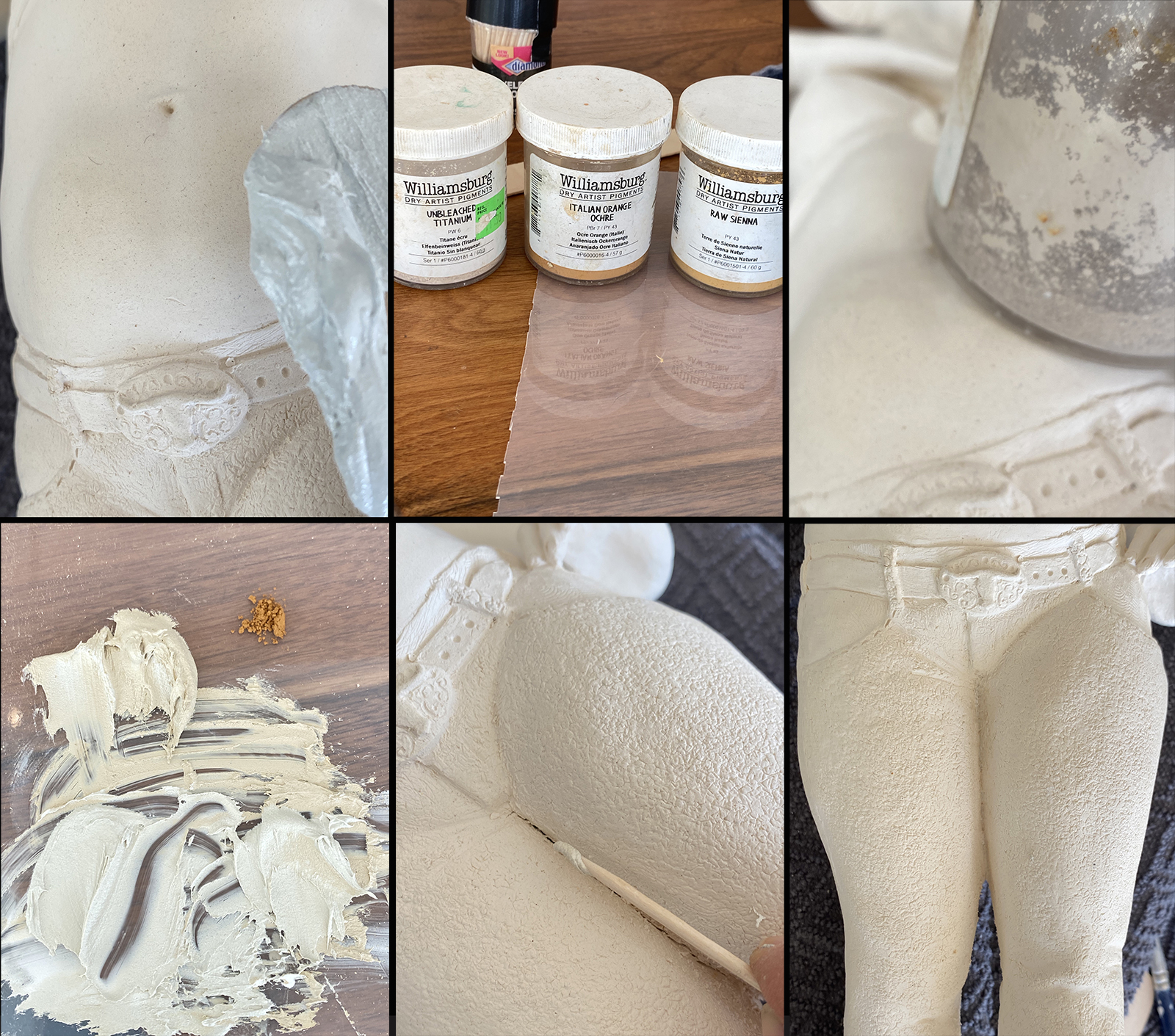
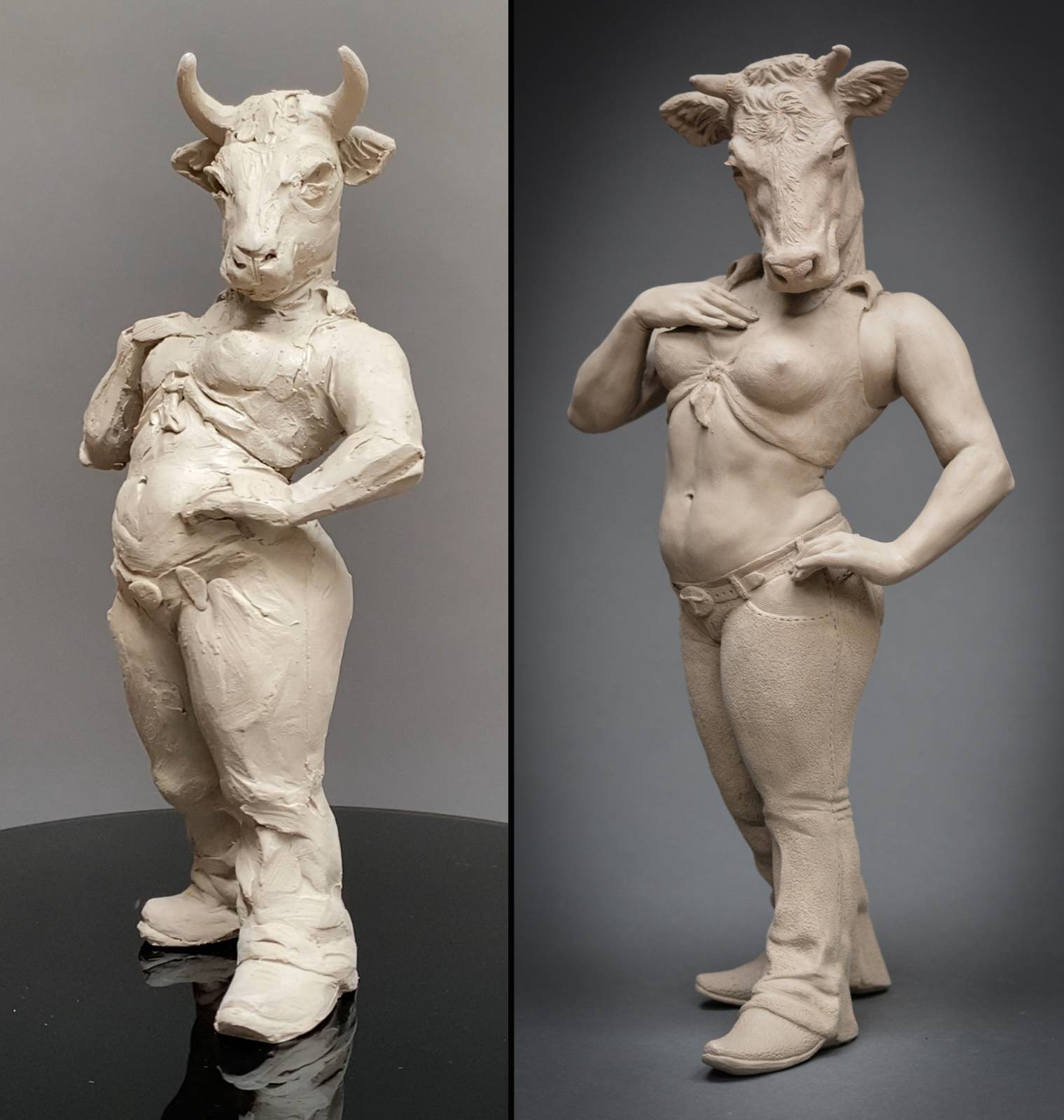


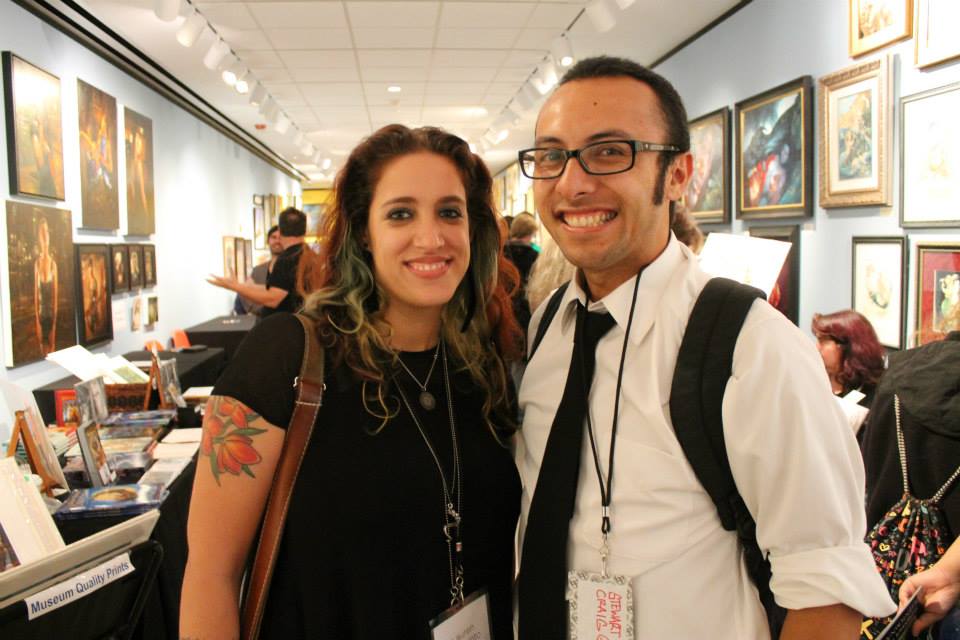

I love how free standing clay sculptures showcase both balance and creativity. The texture and form in your examples are inspiring